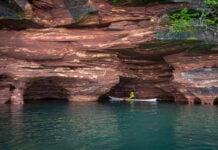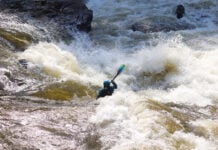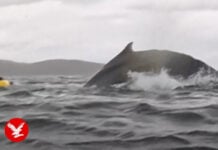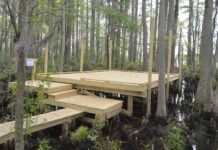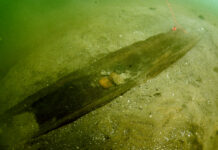Navigating a twisting, narrow river while keeping an eye out for lions, elephants and hippos is just par for the course for the researchers and scientists on National Geographic’s Okavango Wilderness Project.
The Ambitious Multi-Year And Multi-Expedition Initiative Aims To Safeguard The Ecological Health Of The Okavango Delta Region In Botswana—And Much Of The Research Is Done From Canoe
The Okavango is an area of remarkable biodiversity, one of the last pristine wildernesses in Africa,” says National Geographic photographer Pete Muller.
The delta is the largest undeveloped river basin on the planet and home to the world’s largest remaining wild elephant population as well as lions, cheetahs, wild dogs and 470 species of birds. The recent expeditions have discovered 24 species new to science.
The project began in 2015 when National Geographic Fellow Dr. Steve Boyes and a team of Angolan, Namibian and South African scientists began working together to explore and protect the river system. Eight multi-month expeditions followed, exploring different areas of the delta and its source rivers to chart the biodiversity in the river systems and understand its hydrology.
All with the aim to use the information to protect those areas,” says Muller.
The team uses their research and survey work to inform governments, NGOs and local communities, hoping to establish sustainable management of the watershed.
The Okavango River Basin Encompasses A Texas-sized Area, With Source Rivers Extending North Into Namibia And Angola
Currently, the only part of the watershed protected is an UNESCO World Heritage Site in Botswana. As possibilities of industrializing rivers in the watershed with dams and hydroelectric projects are explored, the future of the delta is uncertain, says Muller. The implications are huge—not only is the Okavango Delta the largest freshwater wetland in southern Africa, it’s also the main source of water for a million people.
In 2017, Muller joined the project for two weeks during a two-month expedition down the seasonally flooded Cubano River, which supplies 55 percent of the water to the delta.
“The canoes are the central means of transportation for every part of the expedition,” says Muller. The long, narrow fiberglass canoes are called mokoros.
“The expedition uses mokoros because they’re the traditional means of transport in the delta, and they’re the only way to navigate the river, around or under trees and obstructions,” says Muller. “They’re also largely silent. Steve Boyes—the visionary of the project—felt it was essential to minimize sound and impact lest we disturb the animals and things that might be there, which could mess with the biodiversity survey.”
In This Photo, The Team—Boyes In The Stern Of The Lead Canoe—Is Just Starting The Day On The River At Dawn
The team travels from morning until about 4 p.m., getting off the water well before the hippos become active at dusk.
I believe one of the keys to preserving wilderness is convincing millions of people around the world to protect landscapes and wilderness areas they’ll never visit, because they simply can’t,” says Boyes in a recent TED talk. “We want to share our experiences, so they know these places exist and are important.
Into The Okavango, a documentary about the expeditions, screened at the Tribeca Film Festival on Earth Day, April 22, 2018.
“It’s an uphill battle to keep the necessary political will on a big, major undertaking like this,” adds Muller, who spent much of the last decade working as a conflict photojournalist.
“In recent years, I’ve gravitated more towards environmental issues. Environmental issues are as much, if not more, of a timely crisis in many ways than war and conflict.”




